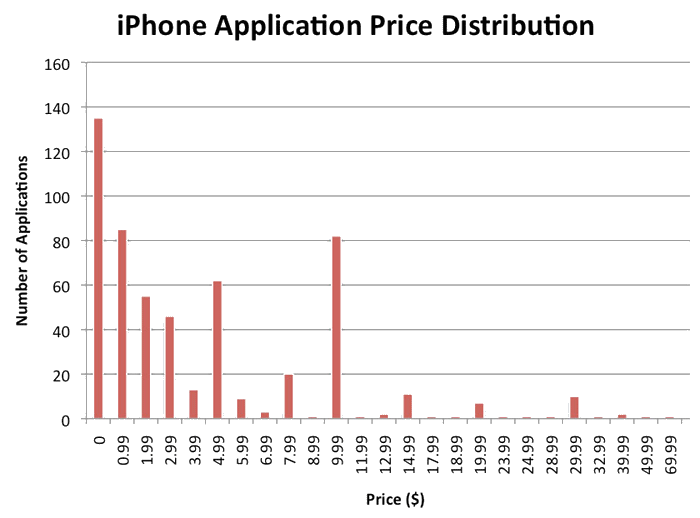A look at how iPhone developers are pricing their apps so far
When the App Store launched earlier this morning, 427 of those applications were pay-to-download apps and the remaining 135 were free, according to PinchMedia — a small firm that aims to support iPhone developers by contributing free analytical tools.
Paid applications ranged in price from $0.99 to $69.99, with the most common price points being $0.99 (85 applications), $9.99 (82 applications), and $4.99 (62 applications), as can be seen in the graph below.
Six months from now, that graph may look entirely different, potentially skewing towards the other emerging price points seen further down the X axis: $14.99, $19.99, and $29.99.
By that time, Apple's iPhone SDK would have been in the hands of developers for 10 months, as opposed to just 4. As the App Store matures, so will the quality of the applications that it serves up.
The applications available today are a result of only a few months work, while many of those coming further down the line are expected to be more feature rich. They'll have consumed more time, more resources, and are therefore likely to fetch higher prices in return.
While the most expensive application on the App Store this morning was priced at $69.99, AppleInsider's behind-the-scenes look (redacted at the demand of Apple Legal) at the store prior to its launch revealed an internal pricing matrix that scaled up to $1000.
The higher developers price their applications, the more money Apple rakes in from its 30 percent cut of sales revenues. There's also unlikely to be any fire sales on the new download service. According to an article at The Standard, the iPhone maker is refusing to allow developers to offer discount incentives on their applications.
 Slash Lane
Slash Lane











 Malcolm Owen
Malcolm Owen
 Christine McKee
Christine McKee

 Amber Neely
Amber Neely

 William Gallagher
William Gallagher








